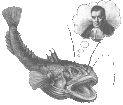UW Aquatic & Fishery Sciences Quantitative Seminar
Jim Thorson
NOAA Northwest Fisheries Science Center
Coauthors: Rachel Hovel, Steve Munch, Hans Skaug, Kasper Kristensen, Mark Maunder, Alexandre Aires-da-Silva
Combining climate and fisheries sciences using reaction-advection-diffusion and spatial dynamic factor analysis models
Abstract
Anyone who grew up with a television is familiar with advection-diffusion models as shown in the daily weather forecast. Models for random and directed movement are also used to forecast climate anomalies like the recent "warm pool" in the Northeast Pacific, and appear commonly throughout weather and climate sciences. However, advective-diffusive movement is rarely included in statistical models for fisheries, despite the adage that fish are like invisible trees that move. Furthermore, previous studies of climate impacts on fish communities have generally not accounted for spatial variation in habitat and how it can modulate climate impacts on fishes. We therefore explain the role of finite-element analysis when modeling advective-diffusive movement in statistical models, and demonstrate this approach by explaining the expansion of Japanese Pacific longline tuna fishery (1952-1974) as an example of mobile predator-prey dynamics. We also demonstrate a new spatial dynamic factor analysis model (SDFA), and explore its use when estimating climate sensitivites and community ordination for multiple species simultaneously. We demonstrate SDFA using 50 years of data for 13 fish species at 11 beach-seine sites in Lake Aleknagik, and demonstrate that spatial variation in the linkage between air temperature and water temperature will likely drive relative differences in climate response among warm and cold-water species. In both case studies, we emphasize the feasibility of developing spatiotemporal models for fish communities that include linkeages among species and with climate, as well as explicit consideration of random and directed movement.

